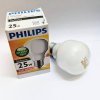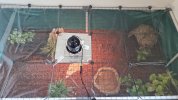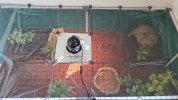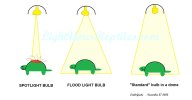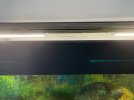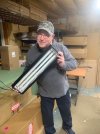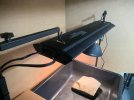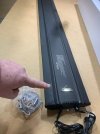This is a thread where you can ask and get SPECIFIC LIGHTING ANSWERS and TIPS you may be looking for..... made EASY!
I was discussing with Mod Tom and we talked about how confusing lighting can be!
In part because there are so many species of tortoise in so many differnt types and sizes of set ups.
All these variables make asking for and getting the correct information SO CONFUSING!
No wonder why everyone gets confused and heads explode!
LOL
🐢 + 💡=💥🤯💥
So...
This is Lighting Made Easy!
But,
here is the catch!
So you get the correct advice for your particular set up and animals
PLEASE post a picture of your set up along with your question(s).
More pics the better!
👍
And SHOW US what you are working with and what you currently have for lighting equipment!
That way, advice can be TARGETED TO YOUR SET UP!
Now,
If you are "post shy" 😔
and do not want to put up a picture, but are still in need of help....
You can simply e-mail me a pic of your set up to me at: [email protected]
Please put: "Need Tortoise lighting advice " in the subject line so I will be able to see it quickly!
I usually respond in 24 hours or less.
OR
Post here and please include a few pictures!
PLEASE:
Describe set up
Type of tortoise you have and how big the animal is.
Cage dimentions / size
What do you have specifically for lights running now?
How far are the lights over TOP OF the animal's SHELL to bulb(s).
Even if you don't put up a post here or feel you need any lighting help...
PLEASE feel free to look through the posts & pics to see SET UPS SIMILAR TO YOUR OWN!
Let's get the correct UVB and lighting over tortoises EVERYWHERE!
So that they will stay HEALTHY and free of Metabolic Bone Disease and horrible, debilitating calcium imbalances!
Feel free to link and share this tread to all tortoise lovers!
I personally will check this thread every evening...
but anyone can also respond to posts & advice or share products that have worked for them!
Cheers,
Todd
lightyourreptiles.com
I was discussing with Mod Tom and we talked about how confusing lighting can be!
In part because there are so many species of tortoise in so many differnt types and sizes of set ups.
All these variables make asking for and getting the correct information SO CONFUSING!
No wonder why everyone gets confused and heads explode!
LOL
🐢 + 💡=💥🤯💥
So...
This is Lighting Made Easy!
But,
here is the catch!
So you get the correct advice for your particular set up and animals
PLEASE post a picture of your set up along with your question(s).
More pics the better!
👍
And SHOW US what you are working with and what you currently have for lighting equipment!
That way, advice can be TARGETED TO YOUR SET UP!
Now,
If you are "post shy" 😔
and do not want to put up a picture, but are still in need of help....
You can simply e-mail me a pic of your set up to me at: [email protected]
Please put: "Need Tortoise lighting advice " in the subject line so I will be able to see it quickly!
I usually respond in 24 hours or less.
OR
Post here and please include a few pictures!
PLEASE:
Describe set up
Type of tortoise you have and how big the animal is.
Cage dimentions / size
What do you have specifically for lights running now?
How far are the lights over TOP OF the animal's SHELL to bulb(s).
Even if you don't put up a post here or feel you need any lighting help...
PLEASE feel free to look through the posts & pics to see SET UPS SIMILAR TO YOUR OWN!
Let's get the correct UVB and lighting over tortoises EVERYWHERE!
So that they will stay HEALTHY and free of Metabolic Bone Disease and horrible, debilitating calcium imbalances!
Feel free to link and share this tread to all tortoise lovers!
I personally will check this thread every evening...
but anyone can also respond to posts & advice or share products that have worked for them!
Cheers,
Todd
lightyourreptiles.com

